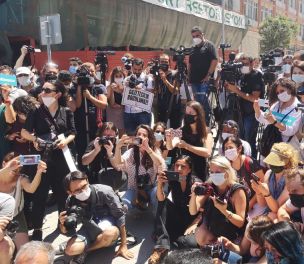Photo:Berke Araklı/ILO
Click to read the article in Turkish
The Confederation of Progressive Trade Unions of Turkey Research Center (DİSK-AR) has released a report on the minimum wage in the country after the Minimum Wage Determination Commission held its first meeting yesterday (December 1).
The commission will decide next year's minimum monthly wage after a series of meetings this month.
Expectations for the new minimum wage have risen because the minimum wage is becoming the average wage in the country, DİSK-AR noted.
Turkey currently has the second-lowest minimum wage in Europe after Albania due to the rapid depreciation of the Turkish lira.
"Those who explain the depreciation of the Turkish lira through expected foreign investments are silent against the fact that the wages of the working class are getting lower day by day," said DİSK-Ar.
Some highlights of the DİSK-AR report:
- Minimum wage is becoming average wage
While millions of workers in Turkey struggle to make ends meet with the insufficient minimum wage, millions of others cannot access minimum wage. Wages of many workers are increasingly becoming closer to the minimum wage. Turkey is rapidly becoming a country of minimum wage earners.
- The gap between the minimum wage and higher wages
The fact that wages in both the public and private sectors do not increase as high as the minimum wage but at the inflation rate closes the gap between the minimum wage and other labor incomes. The minimum wage is becoming the average wage and the share of minimum wage earners is increasing.
- Millions earn lower than the minimum wage
About 3.4 million workers, or 18 percent of all wage earners, earn less than the minimum wage of 2,825 lira (209 USD). The number of workers who earn less than 1,500 lira is 1.7 million. The number of workers who earn minimum wage or lower is 6.3 million, or 33.8 percent of all wage earners.
- Wages slightly above the minimum wage
About 9.7 million workers, or half of all wage earners in the country, earn 120 percent of the minimum wage or lower. Sixty-four percent of all wage earners, or 12.5 million workers, earn between one and a half times the minimum wage and wages lower than the minimum wage.
- Seventy percent in private sector earn minimum wage
In the private sector, 21.8 percent of the workers cannot access the minimum wage. The share of those who earn minimum wage or lower in the private sector is 44 percent and the share of those whose income is around the minimum wage is 69 percent. More than 8.4 million private sector workers earn less than 120 percent of the minimum wage.
- One in four women earns less than the minimum wage
While the share of those who earn less than the minimum wage is 18 percent, this rate is 25 percent among women.
The share of those who earn minimum wage or lower is 34 percent overall and 43 percent among women. The share of women whose income is around the minimum wage is 60 percent.
- Average wage
While the average monthly income was 2.2 times the minimum wage in 2005, it was 1.7 times the minimum wage in 2019.
- Minimum wage and the income per capita
In 1974, the minimum wage was 80.6 percent of the income per capita. It decreased to 54.5 percent in 2021. Had the minimum wage increased at the same rate as the income per capita, it would have been 5,645 lira in 2021.
- Minimum wage, the dollar and gold
While the minimum wage was 371 US dollars in 2008, it decreased to 430 dollars in 2016. It is 336 dollars according to the average exchange rate of the US dollar in 2021.
In 2003, the minimum wage was worth 25 gold coins. It is worth 10.4 gold coins according to the average gold prices this year and 7 gold coins according to the current gold prices. (HA/VK)













